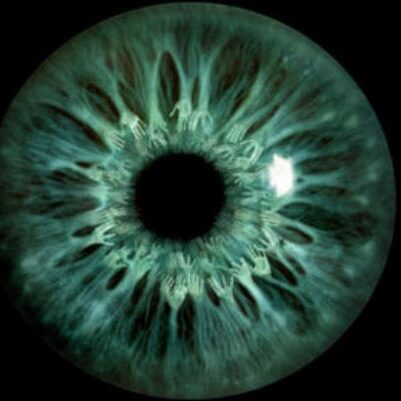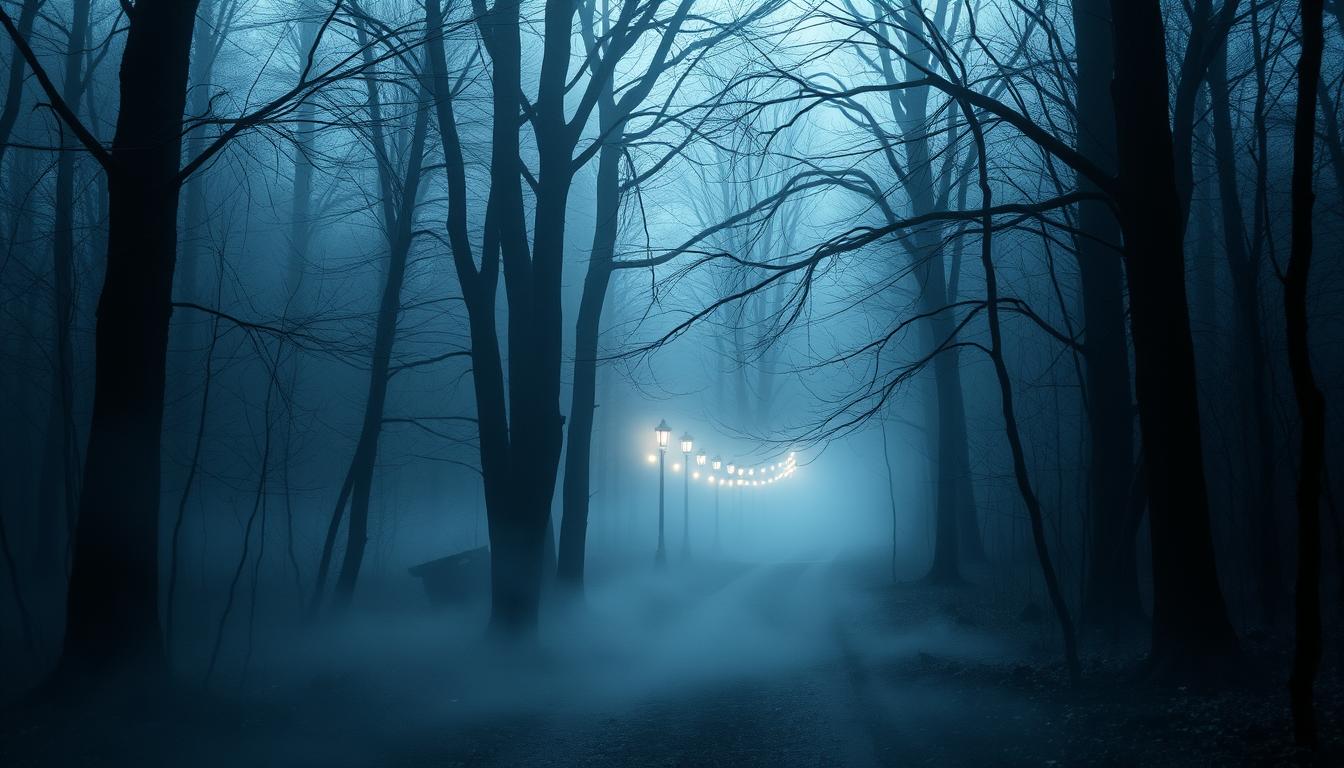The paranormal is a fascinating world that has captured the hearts of many. It includes unexplained disappearances and ghostly encounters. These mysteries spark our curiosity about supernatural forces.
At Texas A&M University, students collect memories that might connect to the paranormal. It’s believed that spirits visit places that were important to them. This could be due to a strong bond or frequent visits during their lifetime.
Unexplained disappearances with paranormal links intrigue both believers and skeptics. The unknown world is vast, covering cryptozoology and extraterrestrial encounters. People often report strange happenings, like hearing voices or seeing shadowy figures.
Key Takeaways
- Paranormal beliefs suggest that a deceased individual’s spirit may visit locations that once held significance in their life.
- Individuals report experiencing unexplained events, such as witnessing strange occurrences and encountering supernatural entities.
- The concept of unexplained disappearances with possible paranormal links continues to captivate both believers and skeptics.
- Paranormal phenomena, including cryptozoology and extraterrestrial encounters, remain a topic of fascination and ongoing investigation.
- The experiences and memories collected by students at Texas A&M University may hold insights into the potential connections between the unexplained and the supernatural.
Unsolved Mysteries: The Revival of an Iconic Series
The Netflix revival of “Unsolved Mysteries” has grabbed the attention of many. It dives into mysteries like disappearances, murders, and paranormal events. The team behind “Stranger Things” and the original “Unsolved Mysteries” are bringing it back. This new version is sure to keep you on the edge of your seat.
Perplexing Disappearances and Paranormal Encounters
Each episode of the new “Unsolved Mysteries” looks into a real-life mystery. From Rey Rivera’s disappearance to Patrice Endres’ death, it’s all real. It also covers strange events like UFO sightings and Josh Guimond’s disappearance. These stories will keep you guessing and wanting more.
Stranger Things Producers Bring New Life to the Show
The team behind “Unsolved Mysteries” and “Stranger Things” has given the show a fresh start. They use interviews, TV footage, and old materials instead of reenactments. This approach keeps the suspense and intrigue that made the original so popular.
Since its premiere in July 2020, “Unsolved Mysteries” has kept viewers hooked. The show is set to release its fourth volume in 2024. It’s a thrilling journey into the unknown, full of unsolved cases and paranormal mysteries.
“Unsolved Mysteries is back, baby! And it’s just as creepy, chilling, and compelling as it ever was.”
– Entertainment Weekly
Unexplained Disappearances with Possible Paranormal Links
The Netflix series “Unsolved Mysteries” focuses on unexplained disappearances with possible paranormal links. These cases, still unsolved, explore if supernatural forces played a role in the vanishings.
The show dives into the mysteries of these disappearances, leaving viewers to think about paranormal connections. It looks into UFO sightings, spirit encounters, Bigfoot, and more. The team behind “Unsolved Mysteries” investigates these supernatural events linked to the disappearances.
The series covers cases from all over and from different times, including the 1900s. The Charley Project database also tracks these historical cases. It helps shed light on America’s unsolved mysteries.
| Statistic | Value |
|---|---|
| Total seasons available for viewing | 4 |
| Number of episodes per season | Varies |
| Duration of episodes | 36 minutes to 54 minutes |
| Cases investigated in the series | Unexplained disappearances, shocking murders, paranormal encounters |
| Percentage of cases involving disappearances | All cases |
| Specific types of paranormal encounters investigated | UFO sightings, encounters with spirits, Bigfoot, orbs, poltergeists, skin-walkers, Mothman |
| Earliest documented case investigated | September 1, 1969 (Berkshires UFO) |
| Latest documented case investigated | 2011 (Tsunami Spirits) |
These disappearances with possible paranormal links keep sparking mystery and debate. They captivate audiences, making them wonder about unseen forces in these cases.
Haunting Tales from Texas A&M University
Texas A&M University is known for its academic achievements. But it also has a mysterious past filled with paranormal activity. Many reports from students, staff, and faculty talk about strange happenings on campus.
Charlene Callaway’s Eerie Experience in Old Kyle Field
Charlene Callaway works at Texas A&M University. She had a scary experience in the “Old Kyle Field.” Her computer would crash, and lights would turn on by themselves.
These strange events made Callaway feel uneasy. She didn’t know who or what was behind it.
The Texas A&M Paranormal Society’s Investigations
The Texas A&M Paranormal Society (TAPS) explores the supernatural. They’ve looked into Francis Hall, where many have seen ghosts. TAPS members have seen strange figures and experienced other odd things.
Even though the evidence is not concrete, their stories add to the mystery of Texas A&M University.
The haunting stories at Texas A&M University fascinate many. The Texas A&M Paranormal Society and people like Charlene Callaway have shared their experiences. These stories show that there’s something unexplained at the university.
Paranormal Beliefs: Prevalence and Perception
Many people believe in ghosts, spirits, or other paranormal activities. Studies show that up to a third of the population holds these beliefs. These beliefs can be shaped by many factors, like cognitive biases and cultural norms.
A study with 723 participants found interesting results. Over half were female, and the average age was 30. The study showed that cognitive ability and personality traits play a role in these beliefs. It found that 19% of the variance in paranormal beliefs could be explained by these factors.
In Germany, 25-50% of people believe in paranormal phenomena. The market for these beliefs is huge, with over 15 billion Euros spent annually. In the US, low-income, religious women are more likely to believe in these things.
However, research shows that believers often do poorly in school. They also make more reasoning errors. The study mentioned earlier found that 42% of participants had a degree, and their IQ was average.
The Revised Paranormal Belief Scale (RPBS) is a tool used to measure these beliefs. But, its validity and structure are debated. As research in this area grows, understanding these beliefs becomes more important.
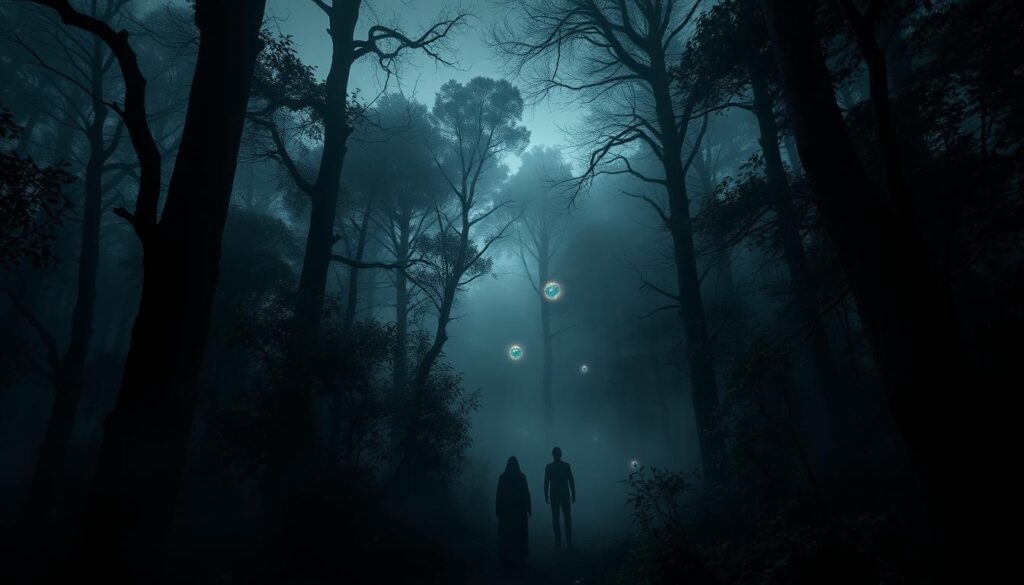
Measuring Paranormal Beliefs: Scales and Instruments
Researchers have created many scales and tools to measure how much people believe in the paranormal. The Revised Paranormal Belief Scale and the Australian Sheep-Goat Scale are two well-known ones.
The Revised Paranormal Belief Scale
The Revised Paranormal Belief Scale was made by Tobacyk and Milford in 1983. It has 26 items to check how much people believe in different paranormal things. These include ghosts, psychic powers, aliens, and witchcraft. People answer each question on a 7-point scale, helping researchers understand their beliefs.
The Australian Sheep-Goat Scale
The Australian Sheep-Goat Scale focuses on beliefs in ESP, psychokinesis, and life after death. It was created by Thalbourne and Delin in 1993. It has 18 questions on a 7-point scale. The “Sheep-Goat” name comes from classifying people as believers or non-believers.
These scales help researchers study paranormal beliefs in a reliable way. They can compare beliefs in different groups and settings. This helps us understand more about paranormal beliefs in society.
“Paranormal beliefs are fascinating, complex, and deeply rooted in human psychology. Understanding how we measure and quantify these beliefs is crucial for unlocking the mysteries of the human mind.”
Cognitive Biases and Paranormal Beliefs
Cognitive biases are key in forming and keeping paranormal beliefs. Intuitive reasoning is linked to believing in the supernatural. This way of thinking uses quick judgments and heuristics.
It leads people to explain unexplained events with paranormal causes. This is because they rely on immediate feelings and impressions over careful analysis.
Intuitive Reasoning and Belief in the Supernatural
Research shows that those who think intuitively are more likely to believe in the paranormal. They tend to see patterns and connections where there are none. This makes them more likely to believe in supernatural explanations.
For instance, studies found that paranormal believers see faces in photos and imagine figures in random lights. They also think they see intention in moving shapes. This pattern-seeking behavior helps build and strengthen supernatural beliefs.
| Study | Findings |
|---|---|
| BMG Halloween Poll in the UK (2017) | Around a third of Brits believed in ghosts, spirits, or other types of paranormal activities. |
| Study in Austria | Discovered a relationship between paranormal beliefs, creationism, intelligent design, and evolution among secondary school students. |
| Research in New Zealand (1991) | Revealed insights into belief in the paranormal in that region. |
These studies show that cognitive biases, especially intuitive reasoning, shape paranormal beliefs. They influence how people see the world.
“Paranormal believers were found to be more likely to see hidden faces in everyday photos and imagine they had seen a walking figure in random light displays.”
Conspiracy Theories and Their Relationship with Paranormal Beliefs
Research has found an interesting link between believing in conspiracy theories and paranormal phenomena. People who believe in conspiracies often also believe in supernatural things like ghosts and UFOs. This connection might come from similar ways of thinking and a desire to find answers that aren’t given by mainstream evidence.
One study showed that people prefer conspiracy explanations when they see a pattern in events. Another study found that feeling powerless makes people more likely to believe in conspiracies. This could be why both conspiracy theories and paranormal beliefs involve seeing patterns and rejecting randomness.
But, the exact link between conspiracy thinking and seeing patterns, even when there isn’t one, is still being studied. Exploring this connection could help us understand how we see the world and our own biases.
“The Bermuda Triangle is one of the most well-known paranormal hotspots, with countless reports of mysterious disappearances and unexplained phenomena. Yet, scientific investigations have found no evidence to suggest the area is more prone to such anomalies than other well-traveled regions of the ocean.”
Looking into the connection between conspiracy theories and paranormal beliefs opens up a fascinating area of the human mind. It’s where we search for meaning, control, and the unknown. By understanding these links, we can gain a better view of the world and learn to recognize our own biases and perceptions.
Personality Traits and Paranormal Beliefs
Your personality can really shape your views on the paranormal. Studies show that some traits make you more likely to believe in supernatural things. On the other hand, being more analytical and skeptical can make you doubt these beliefs more.
People who are open to new experiences and think intuitively are more likely to believe in the paranormal. They enjoy exploring the unknown and looking for new explanations. Exploring paranormal phenomena is exciting for them.
But, those who think more critically might not believe in the paranormal as much. They look for solid evidence and logical reasons. This makes them skeptical of supernatural claims, even if they don’t rule it out completely.
Your personality greatly influences how you see the paranormal. Whether you believe or doubt, understanding this connection can give you insight into your worldview.
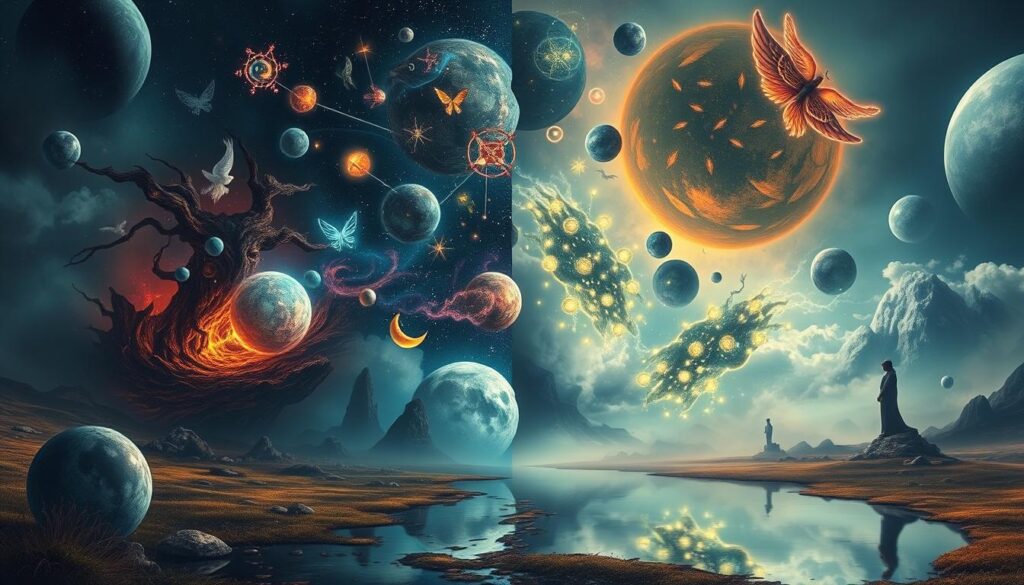
“Approximately 8% of the population will experience sleep paralysis at least once in their life, with higher rates among students and psychiatric patients.”
When you explore the paranormal, remember that your personality and biases matter. Being open but critical can help you understand the supernatural with curiosity and caution.
The Role of Religiosity and Spirituality in Paranormal Beliefs
The link between religiosity, spirituality, and paranormal beliefs is complex. Some studies show a positive link between religious or spiritual beliefs and a belief in paranormal phenomena. This suggests common cognitive and psychological roots. Yet, other research suggests that very religious people might not believe in some paranormal things. Their religious views might offer other explanations for mysteries.
In Italy, research found a unique pattern. People with very little or a lot of religious activity tend to believe less in the paranormal. But those with a moderate level of religious activity believe more. Similar findings were seen in Scotland and Canada, where regular religious attendance is linked to paranormal beliefs.
But, not all studies agree. Some have found no clear link between religiosity and paranormal beliefs. Yet, in the United States, over 90 percent of adults believe in something paranormal. This shows how common these beliefs are in society.
| Country | Relationship between Religiosity and Paranormal Beliefs |
|---|---|
| Italy | Curvilinear relationship, with those at the lowest and highest levels of religious participation holding lower average levels of paranormal belief than those with moderate religious participation |
| Scotland and Canada | Positive relationship between religious beliefs and paranormal beliefs, particularly among those who do not attend religious services regularly |
| United States | Over 90 percent of American adults profess at least one paranormal belief |
The study of religiosity, spirituality, and paranormal beliefs is ongoing. Researchers are trying to understand the complex factors behind these beliefs. They aim to uncover the cognitive, psychological, and social reasons for their prevalence and variety.
Paranormal Beliefs and Academic Performance
Research has shown an interesting link between paranormal beliefs and school performance. Some studies say that people who believe in the paranormal might find it harder in school. This could be because their way of thinking isn’t as good for solving problems and thinking critically. But, it’s not just about beliefs; other things like personality and how we think can also affect how well we do in school.
A study in 2006 found that older students were more likely to believe in ghosts and psychics. But, a Gallup Poll in 2001 showed that younger people were more open to these ideas. This shows that beliefs can change as we get older.
A 2009 survey by the Pew Research Center found that many people, especially Catholics and black Protestants, believed in supernatural things. This suggests that faith can influence what we think about the paranormal.
Scientists have come up with different ideas to explain why paranormal beliefs might affect school grades. Psychologist Richard Wiseman thinks that scary experiences or the setting can make us believe in the paranormal. Also, the media, like books and TV shows, can make these beliefs more common.
“Paranormal believers tend to attribute events to deliberate entities, showing a predisposition to believing in the illusion of agency.”
Some scientists believe that our brains are wired to see patterns, even when they’re not there. This could make it harder to think critically in school.
Understanding how paranormal beliefs affect school performance is important. It helps us see how different ways of thinking and cultural influences can shape our education. By studying these connections, we can learn more about how to help students succeed.
Thinking Styles and Proneness to Paranormal Beliefs
Ever thought about how your thinking style affects your views on the paranormal? Research shows that how we process information and make choices can influence our openness to the unknown.
Studies found that people who trust their instincts more often believe in the paranormal. This might be because they tend to make quick connections without solid proof.
The Impact of Intuitive Thinking and Gender
Interestingly, gender also plays a role. Women might lean more towards intuitive thinking, leading to a higher belief in paranormal events. This could be due to societal and cultural influences on our thinking.
However, it’s not a hard rule. People who think analytically can still believe in the paranormal. And those who trust their instincts might not believe in everything supernatural. Our thoughts, personality, and culture all mix together to shape our views on the unexplained.
Understanding the link between thinking styles, intuition, gender, and paranormal beliefs offers deep insights. It helps us approach the paranormal with a critical and balanced mindset.
The Misattribution Hypothesis and Paranormal Experiences
The misattribution hypothesis explains why people believe in paranormal experiences. It says that people might think something supernatural is happening when it’s really not. This can make them believe in things that aren’t real.
Researchers have looked into how misattribution leads to paranormal beliefs. They found that people who think more intuitively and have lower cognitive ability are more likely to believe in the paranormal. This shows that how we think can influence what we believe.
| Key Findings | Implications |
|---|---|
|
|
Understanding misattribution helps us see why people believe in the paranormal. By studying this, researchers can learn more about why these beliefs start and stick around. They might even find ways to change how we think and believe.
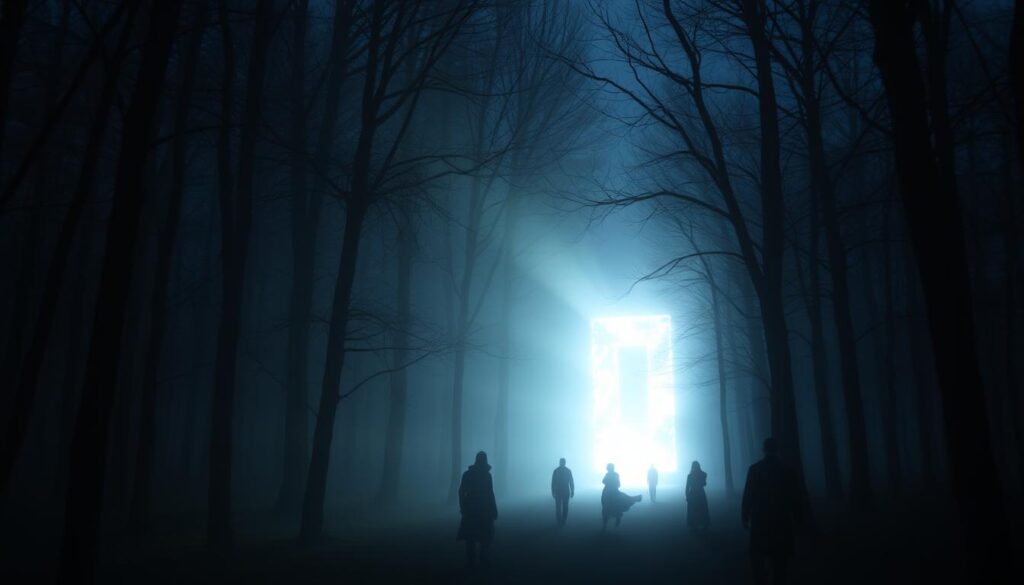
Physiological Correlates of Paranormal Beliefs
Researchers have explored the physical roots of paranormal beliefs. They aim to grasp the biological aspects that might sway someone’s belief in such phenomena. Studies have uncovered the physiological correlates of paranormal beliefs. They reveal the biological factors that link our body’s workings to our belief in the paranormal.
Research indicates that many people believe in paranormal events. For example, 37% of Americans think houses can be haunted. In the UK, 27% believe in mental communication with the dead. Also, in 2010, two in five Europeans said they were superstitious. This shows that paranormal beliefs are common worldwide.
Education’s effect on paranormal beliefs is complex. Just learning research methods or statistics doesn’t change beliefs. But, specific training can help. It teaches critical thinking and how to avoid biases.
| Key Findings | Implications |
|---|---|
| Paranormal beliefs strongly correlate with reported personal paranormal experiences. | People who believe in the paranormal might see their experiences as supernatural. This can strengthen their beliefs. |
| High schizotypy individuals have a tendency to interpret personal experiences as paranormal (magical ideation), which can lead to biased thinking and a propensity for false-positive errors. | Certain traits and biases can make people more likely to believe in the paranormal. This shows a mix of psychological and physical factors at play. |
| Individuals with paranormal beliefs may have a stronger vulnerability to laboratory-induced illusions of causality compared to non-believers. | The struggle to see and understand cause and effect might keep paranormal beliefs alive. This highlights the role of our minds in these beliefs. |
The study of paranormal beliefs reveals a complex mix of biological, cognitive, and personal factors. Grasping these mechanisms can help us understand paranormal beliefs better. It also sheds light on how these beliefs might influence our actions and choices.
Age and Gender Differences in Paranormal Beliefs
Many studies have looked into how age, gender, and paranormal beliefs are connected. They found that certain groups might be more likely to believe in supernatural things.
Young people, especially those in their late teens and early twenties, believe in paranormal events more than older folks. This could be because of things like watching supernatural movies, how our brains grow, and our spiritual views as we get older.
Research shows that women often believe in paranormal things more than men. This difference might come from how society views men and women, how our brains work, and the fact that women might be more into things like astrology and tarot reading.
| Characteristic | Relationship with Paranormal Beliefs |
|---|---|
| Age | Younger individuals generally show stronger beliefs in the paranormal, while older adults tend to report lower levels of such beliefs. |
| Gender | Women are more likely to endorse paranormal phenomena compared to men. |
The link between age, gender, and paranormal beliefs is complex. It’s influenced by many factors like culture, how our brains work, and our personalities. More research is needed to understand these differences better.
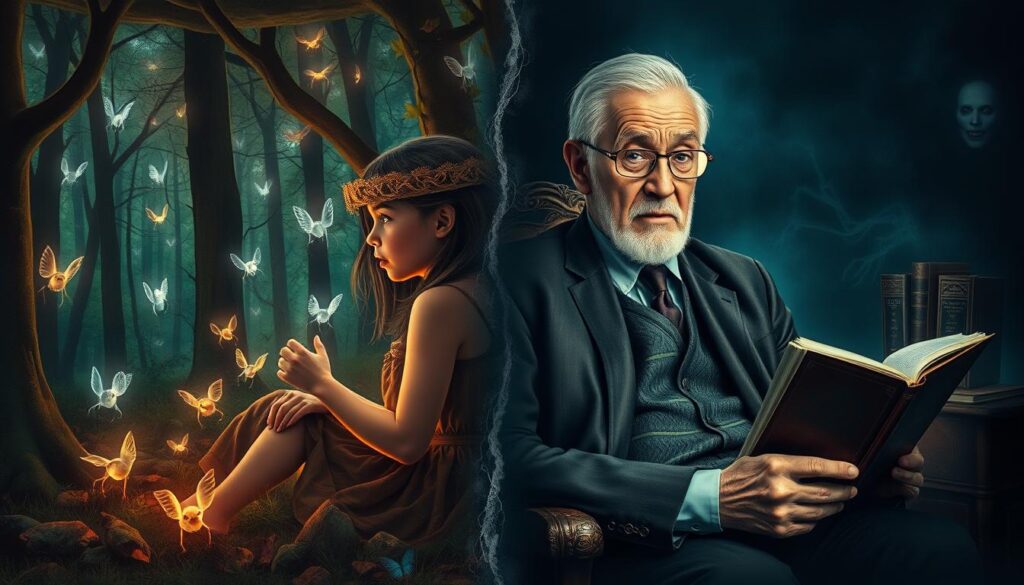
Studying age and gender differences in paranormal beliefs helps us see the wide range of views and experiences about the unknown and the extraordinary.
Executive Functions and Paranormal Beliefs
Research has shown a link between your brain’s executive functions and beliefs in the paranormal. Studies suggest that better executive functions, like planning and problem-solving, might mean you’re less likely to believe in ghosts or other supernatural things.
It’s thought that your ability to think critically and logically plays a big part. People with strong executive functions can better judge claims of the supernatural. They use facts and reason, not just feelings or gut instincts. On the other hand, those with weaker executive functions might find it harder to doubt paranormal beliefs.
But, the connection between brain functions and paranormal beliefs isn’t simple. Personality traits, thinking styles, and cognitive biases also affect how we see the world. Scientists are still learning about how these factors influence our beliefs in the paranormal.
“The more you can engage your critical thinking and your ability to look at things objectively, the less likely you are to believe in the paranormal.”
Learning about the role of executive functions in paranormal beliefs can give you insight into your own thinking. This knowledge helps you understand how your brain shapes your views. It can make you more aware of the line between the natural and supernatural.
Conclusion
The study of unexplained disappearances and paranormal beliefs shows how complex this topic is. Cognitive factors, personality traits, and religiosity all affect our beliefs. These factors help us understand why some people believe in the paranormal.
Even though we can’t prove the existence of the paranormal, studying these beliefs is important. It helps us learn more about the human mind and why we seek answers to unexplained disappearances.
The stories of unexplained disappearances and paranormal events fascinate us all. Researchers are working hard to understand the mix of psychological, cognitive, and sociocultural factors. This work helps us see how our minds deal with the unknown and our need to find answers.
The study of paranormal beliefs and their impact on academic performance is very interesting. It shows how our beliefs and thinking affect us. By studying this, we can learn more about ourselves and how we make decisions.
By looking at this topic from many angles, we can gain a deeper understanding of ourselves. This way, we can solve one mystery at a time. It’s a journey into the human experience, full of surprises and discoveries.
FAQ
What is the concept of the paranormal, and how does it relate to the experiences of Texas A&M University students?
The paranormal is a fascinating topic. Some people believe in it, while others are skeptical. It’s thought that spirits might attach to places due to strong connections or frequent visits.
At Texas A&M University, students often collect memories. Paranormal beliefs suggest that spirits might visit places that were important to them. This can lead to strange events or activity.
How does the Netflix series “Unsolved Mysteries” explore cases of unexplained disappearances with potential paranormal connections?
The Netflix series “Unsolved Mysteries” looks into real mysteries. It covers disappearances, shocking murders, and paranormal events. The show is made by the creators of “Stranger Things.”
It dives into cases like Rey Rivera’s disappearance and Patrice Endres’ death. It also looks at UFO sightings and Josh Guimond’s disappearance. These stories might have paranormal connections, leaving viewers wondering.
What paranormal experiences have been reported at Texas A&M University, and how have they been investigated?
Texas A&M University has its share of paranormal stories. Charlene Callaway had a scary experience in “Old Kyle Field.” Her computer acted up, and lights turned on by themselves.
The Texas A&M Paranormal Society (TAPS) has also investigated. They looked into Francis Hall, where strange things have been reported. TAPS members saw unexplained figures and events.
How prevalent are paranormal beliefs, and what factors influence an individual’s propensity for such beliefs?
Paranormal beliefs vary among people. Up to a third might believe in ghosts or spirits. Several factors can influence these beliefs, like cognitive biases and religiosity.
What are some of the scales and instruments used to measure and assess paranormal beliefs?
Researchers use scales to measure paranormal beliefs. The Revised Paranormal Belief Scale and the Australian Sheep-Goat Scale are two examples. They help quantify how much someone believes in paranormal phenomena.
How do cognitive biases influence an individual’s belief in the paranormal?
Cognitive biases play a big role in paranormal beliefs. Intuitive reasoning, which relies on quick judgments, is linked to believing in the supernatural. This style of thinking can lead to attributing unexplained events to paranormal causes.
Is there a relationship between belief in conspiracy theories and paranormal beliefs?
Research shows a link between conspiracy theories and paranormal beliefs. People who believe in conspiracies are more likely to believe in paranormal phenomena. This might be due to similar biases and a desire for alternative explanations.
How do personality traits influence an individual’s propensity for paranormal beliefs?
Personality traits affect paranormal beliefs. Traits like openness to experience and intuitive thinking are linked to believing in the supernatural. On the other hand, skeptical traits might lower the likelihood of paranormal beliefs.
What is the relationship between religiosity, spirituality, and paranormal beliefs?
The relationship between religiosity and paranormal beliefs is complex. Some studies find a positive correlation, suggesting shared cognitive mechanisms. However, other research suggests that religious individuals might be less likely to believe in the paranormal, as their worldview offers alternative explanations.
How do paranormal beliefs relate to academic performance?
Paranormal beliefs and academic performance are linked. Some studies suggest that paranormal believers might do worse in school. This could be due to a cognitive style less suited for critical thinking. However, other factors like personality traits also play a role.
How do thinking styles and gender influence an individual’s proneness to paranormal beliefs?
Thinking styles and gender impact paranormal beliefs. Intuitive thinking is linked to believing in the supernatural. Women might be more inclined towards intuitive thinking, making them more open to paranormal beliefs.
What is the misattribution hypothesis, and how does it explain the formation of paranormal beliefs and experiences?
The misattribution hypothesis explains paranormal beliefs. It suggests that people might attribute unexplained events to supernatural causes. This can lead to the development and maintenance of paranormal beliefs.
Are there any physiological correlates of paranormal beliefs?
Researchers look into the physiological aspects of paranormal beliefs. They explore the relationship between biological factors and paranormal beliefs. This research aims to understand the biological mechanisms behind these beliefs.
Are there age and gender differences in paranormal beliefs?
Age and gender differences in paranormal beliefs have been studied. Younger individuals and women might be more open to paranormal phenomena. However, these differences are complex and influenced by various factors.
How do executive functions relate to an individual’s propensity for paranormal beliefs?
Executive functions, like planning and problem-solving, are linked to paranormal beliefs. Stronger executive functions might be associated with lower paranormal beliefs. This could be due to a greater ability for critical thinking.
Source Links
- The Vanishing Beach, Being Followed By Their Doppelgängers, And 23 Other Creepy Real-Life "Unsolved Mysteries" – https://www.buzzfeed.com/angelicaamartinez/real-life-unsolved-mysteries-january-2024
- Spooky! Top 10 Unexplained Phenomena – https://www.livescience.com/11345-top-ten-unexplained-phenomena.html
- The 6 Creepiest Unsolved Mysteries in U.S. National Parks – https://www.outsideonline.com/adventure-travel/national-parks/national-park-mysteries/
- Unsolved Mysteries – https://en.wikipedia.org/wiki/Unsolved_Mysteries
- Unsolved Mysteries (TV Series 2020– ) ⭐ 7.3 | Documentary, Crime, Mystery – https://www.imdb.com/title/tt9642938/
- TV Review: Netflix’s Unsolved Mysteries – https://www.joblo.com/tv-review-netflixs-unsolved-mysteries/
- Watch Unsolved Mysteries | Netflix Official Site – https://www.netflix.com/title/81026055
- 9 real-life horror stories of people who disappeared and were never found – https://www.vox.com/2014/10/31/7135439/real-life-horror-stories-disappearances
- Unexplained Phenomena on Campus: Could It Be Ghosts? – https://cushing.library.tamu.edu/thecollective/2021/12/Unexplained_Phenomena_on_Campus.html
- Browse Texas Real Haunts and TX Paranormal – https://www.texashauntedhouses.com/real-haunts/
- The Tall Tale of the Sabine River Goat Man and the Haunted Cemetery – https://www.texasmonthly.com/arts-entertainment/haunted-sabine-river-joe-lansdale/
- Linking paranormal and conspiracy beliefs to illusory pattern perception through signal detection theory – Scientific Reports – https://www.nature.com/articles/s41598-023-36230-0
- Paranormal beliefs and individual differences: story seeking without reasoned review – https://www.ncbi.nlm.nih.gov/pmc/articles/PMC7330497/
- Paranormal beliefs and cognitive function: A systematic review and assessment of study quality across four decades of research – https://www.ncbi.nlm.nih.gov/pmc/articles/PMC9067702/
- Individuals Who Believe in the Paranormal Expose Themselves to Biased Information and Develop More Causal Illusions than Nonbelievers in the Laboratory – https://www.ncbi.nlm.nih.gov/pmc/articles/PMC4503786/
- Cognitive factors underlying paranormal beliefs and experiences – https://academic.oup.com/book/6172/chapter/149751880
- Psychology: The truth about the paranormal – https://www.bbc.com/future/article/20141030-the-truth-about-the-paranormal
- There Are 7 Chilling Conspiracy Theories About the Bermuda Triangle – https://www.popularmechanics.com/science/environment/a39750723/what-is-the-bermuda-triangle/
- Suspicious binds: Conspiracy thinking and tenuous perceptions of causal connections between co‐occurring and spuriously correlated events – https://www.ncbi.nlm.nih.gov/pmc/articles/PMC6282862/
- Paranormal – https://en.wikipedia.org/wiki/Paranormal
- Ghosts, Ouija boards, and ESP: Psychology and the paranormal, with Chris French, PhD – https://www.apa.org/news/podcasts/speaking-of-psychology/paranormal
- Countervailing Forces: Religiosity and Paranormal Belief in Italy – https://www.chapman.edu/wilkinson/_files/crassh/Badar/countervailing-forces-religiosity.pdf
- SOCIAL INFLUENCE ON PARANORMAL BELIEFS – https://scholarcommons.sc.edu/cgi/viewcontent.cgi?referer=&httpsredir=1&article=1003&context=socy_facpub
- Americans’ Beliefs in Paranormal Phenomena (Infographic) – https://www.livescience.com/16748-americans-beliefs-paranormal-infographic.html
- Science of the Paranormal: Can You Trust Your Own Mind? – https://www.livescience.com/52641-science-of-paranormal-ghosts.html
- Mental Health and the Paranormal – https://digitalcommons.ciis.edu/context/ijts-transpersonalstudies/article/1094/viewcontent/IJTS_31_1_08_pp_61_74_Dein_2012_Mental_Health_and_the_Paranormal.pdf
- Frontiers | Conspiracy theory and cognitive style: a worldview – https://www.frontiersin.org/journals/psychology/articles/10.3389/fpsyg.2015.00206/full
- paranormal phenomena: Topics by WorldWideScience.org – https://worldwidescience.org/topicpages/p/paranormal phenomena.html
- revised paranormal belief: Topics by Science.gov – https://www.science.gov/topicpages/r/revised paranormal belief.html
- Frontiers | Self-Ascribed Paranormal Ability: Reflexive Thematic Analysis – https://www.frontiersin.org/journals/psychology/articles/10.3389/fpsyg.2022.845283/full
- Development of the Paranormal and Supernatural Beliefs Scale using classical and modern test theory – BMC Psychology – https://bmcpsychology.biomedcentral.com/articles/10.1186/s40359-021-00600-y
- PDF – https://dial.uclouvain.be/downloader/downloader.php?pid=boreal:96336&datastream=PDF_09
- Anomalistic Psychology: Exploring Paranormal Belief and Experience 9781403995711, 9781137368065 – DOKUMEN.PUB – https://dokumen.pub/anomalistic-psychology-exploring-paranormal-belief-and-experience-9781403995711-9781137368065.html
- An Investigation of the Missing411 Conspiracy | Skeptical Inquirer – https://skepticalinquirer.org/2017/07/an-investigation-of-the-missing411-conspiracy/
- M Cave and the Unexplained Disappearance of Kenny Veach – Nevada Magazine – https://nevadamagazine.com/issue/september-october-2019/11423/
- 19 of the Strangest Unsolved Mysteries of All Time – https://www.rd.com/list/strangest-unsolved-mysteries/
